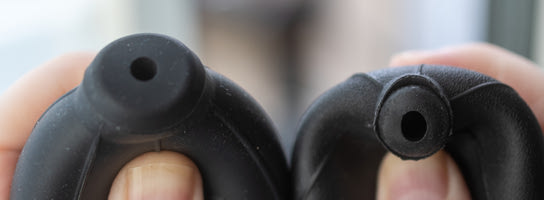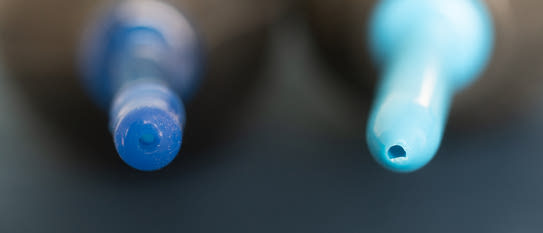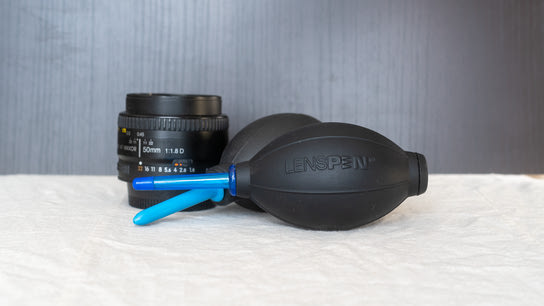I had trouble getting hold of an air puffer earlier this year, because of the global disruptions to retail supply chains. Air puffers are used to dust off sensitive equipment like camera lenses and sensors, printed circuit boards, and electronics. It’s also well suited for dedusting difficult-to-clean living room centerpieces like a Lego space ship model. The one I had ordered didn’t arrive in months, so I picked up a cheap one when I came by one. Of course, the one I’d ordered months earlier arrived the next day. I decided to make a quick comparison review as I had ended up with two air puffers of very different quality.
The first air puffer I ordered is the LensPen Hurricane Blower for about 10 USD. The second air puffer (“the cheapo”) only cost 1 USD. It’s the one you’ll find listed under 20+ different brand names on Amazon and AliExpress. So, what’s the difference between an air puffer that costs 10 USD and one that costs 1 USD?
The most obvious difference out of the box between the two products was the smell. LensPen proudly states they make their products from non-toxic rubber. I don’t have the skills or equipment to analyze the materials or verify LensPen’s non-toxicity claim. The LensPen smelled nothing out of the box or when used, but the cheapo stink of vulcanized rubber (“new tire smell.”) Squeezing it releases a strong unpleasant odor, and it sticks to my hands for a while afterward. The cheapo’s smell is potent after two weeks out of its packaging.
The rubber on the LensPen is thicker than on the cheapo. The cheapo requires less force to squeeze, but there isn’t a significant difference. However, you get more airflow out of each squeeze on the LensPen, and not only because of the increased force. Squeezing the cheapo causes approximately 20 % of the air to leak out through the intake vent on the back. You can reduce the amount of air that escapes out of the back by squeezing it near the front of the bulb. This also reduces the air pressure, however. A tiny amount of air escapes through the LensPen’s intake vent, but it makes no difference how you squeeze it.

The intake filter molding on the LensPen (left) vs. cheapo (right)
The above below shows the filtered intake vents on the back of each air puffer. In the photo, I’m applying almost twice the force on the LensPen compared to the cheapo. The molding around the intake remains rigid on the LensPen, but the molding on the cheapo reveals why I gave it that name.
Both air puffers performed their main task well. I’ve used both to dust off all my collectibles and the insides of all my laptops. The air pressure isn’t strong enough to blow debris out of a computer keyboard, though. It’s more than powerful enough to remove dust from camera lenses and sensors, and dedust circuit boards and computer components.
The LensPen’s nozzle features a soft rubber tip, whereas the cheapo’s nozzle is a single piece of hard plastic. The photo below shows the tips of each nozzle, including a molding defect on the cheapo (light cyan.) I prefer the LensPen’s soft rubber tip in case I accidentally poked it into a camera sensor or some other sensitive equipment.

The nozzle on a LensPen (left) vs. cheapo (right)
The LensPen’s nozzle directs the airstream in a more concentrated area so you get more of it where you aim. The cheapo disperses the airstream over a larger area. I’m not sure if this is because of the nozzle design or its molding imperfection.
It probably doesn’t come as a surprise to anyone: but you get what you pay for. This even applies in a cheap product categories like hand-operated air puffers. The LensPen is well worth the few extra dollars. The cheaper version works fine, but it’s less efficient than the LensPen Hurricane Blower.
